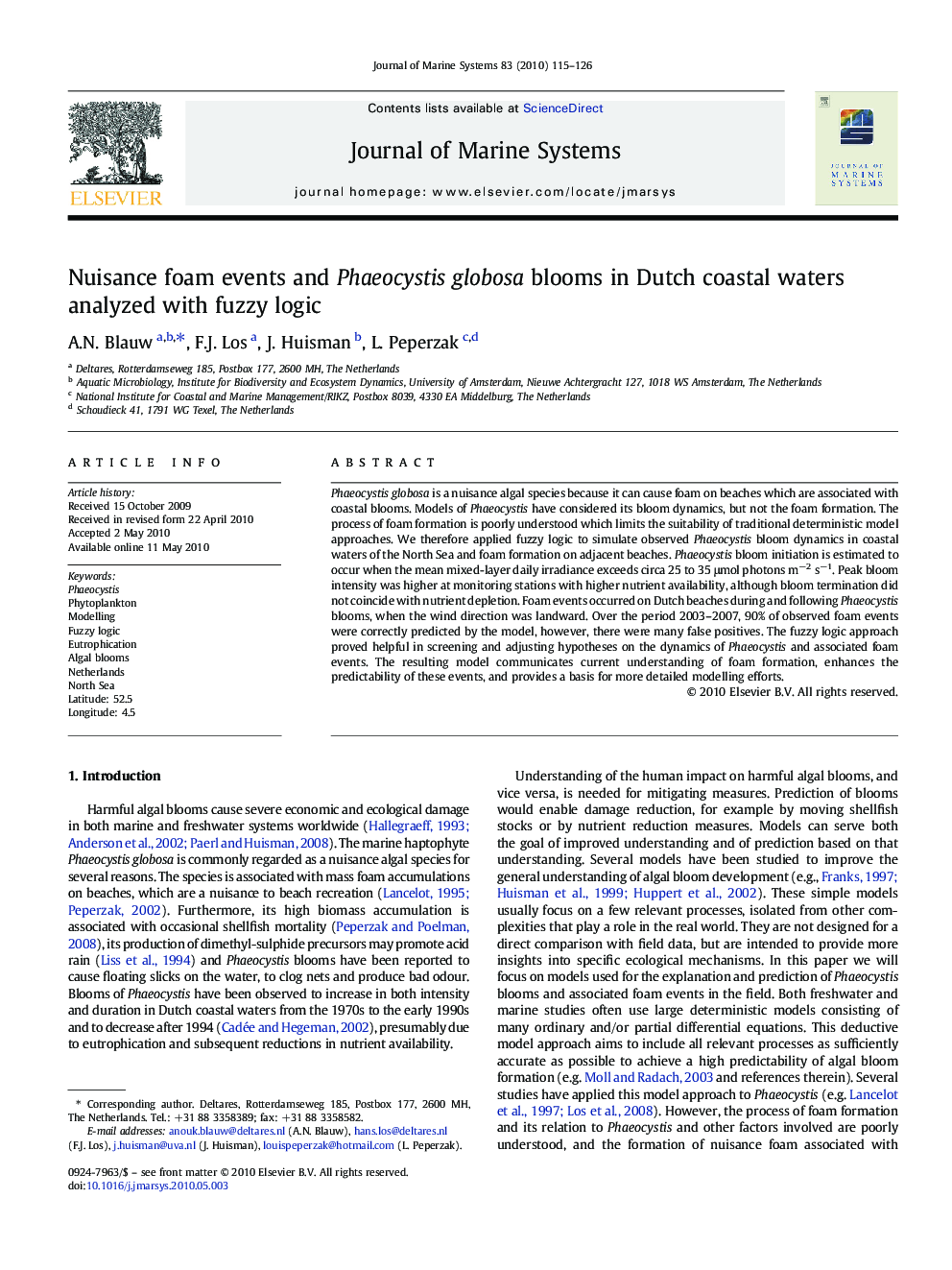| Article ID | Journal | Published Year | Pages | File Type |
|---|---|---|---|---|
| 4548547 | Journal of Marine Systems | 2010 | 12 Pages |
Phaeocystis globosa is a nuisance algal species because it can cause foam on beaches which are associated with coastal blooms. Models of Phaeocystis have considered its bloom dynamics, but not the foam formation. The process of foam formation is poorly understood which limits the suitability of traditional deterministic model approaches. We therefore applied fuzzy logic to simulate observed Phaeocystis bloom dynamics in coastal waters of the North Sea and foam formation on adjacent beaches. Phaeocystis bloom initiation is estimated to occur when the mean mixed-layer daily irradiance exceeds circa 25 to 35 μmol photons m−2 s−1. Peak bloom intensity was higher at monitoring stations with higher nutrient availability, although bloom termination did not coincide with nutrient depletion. Foam events occurred on Dutch beaches during and following Phaeocystis blooms, when the wind direction was landward. Over the period 2003–2007, 90% of observed foam events were correctly predicted by the model, however, there were many false positives. The fuzzy logic approach proved helpful in screening and adjusting hypotheses on the dynamics of Phaeocystis and associated foam events. The resulting model communicates current understanding of foam formation, enhances the predictability of these events, and provides a basis for more detailed modelling efforts.
